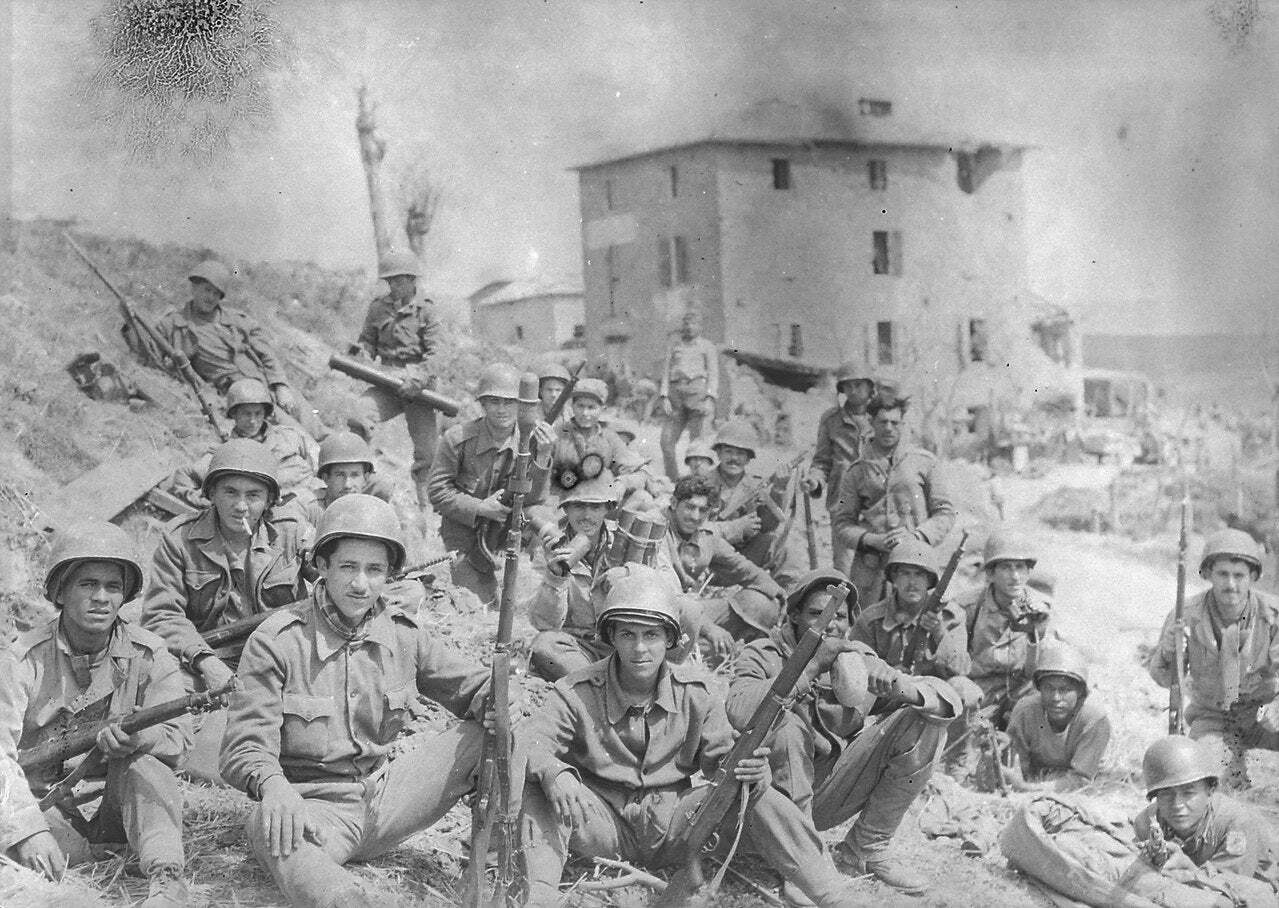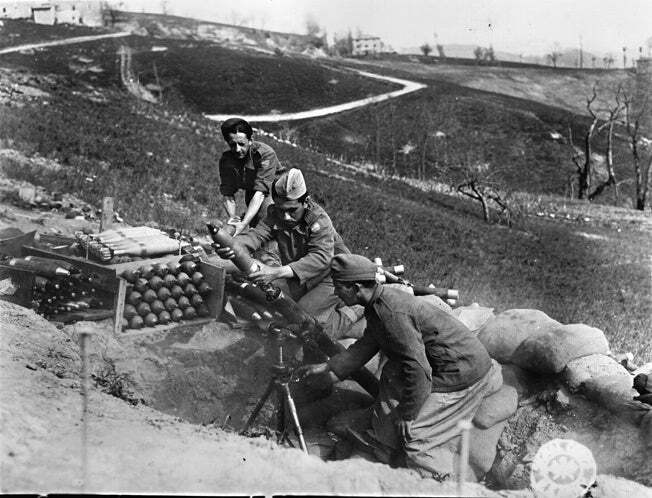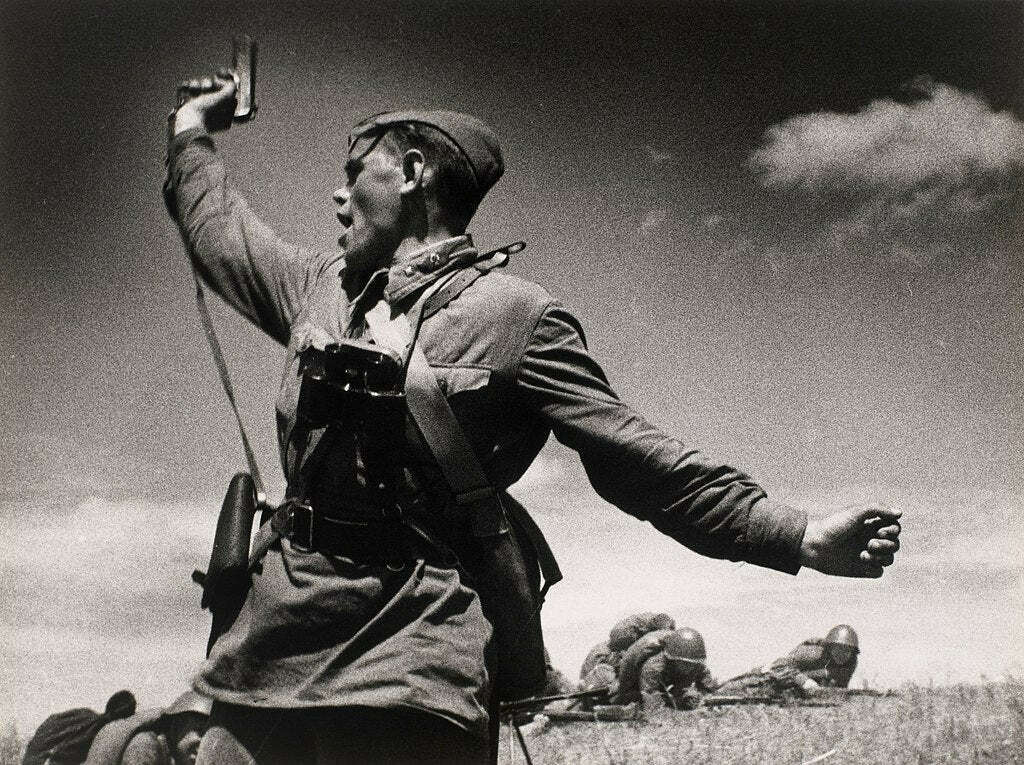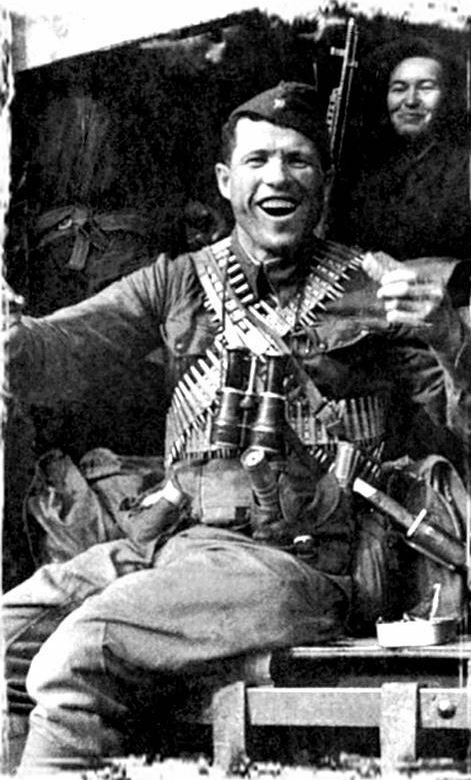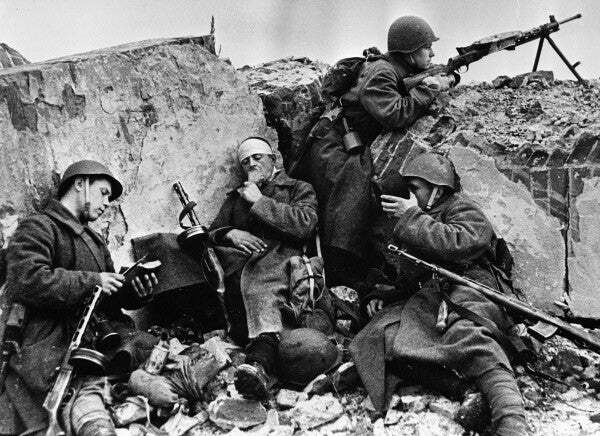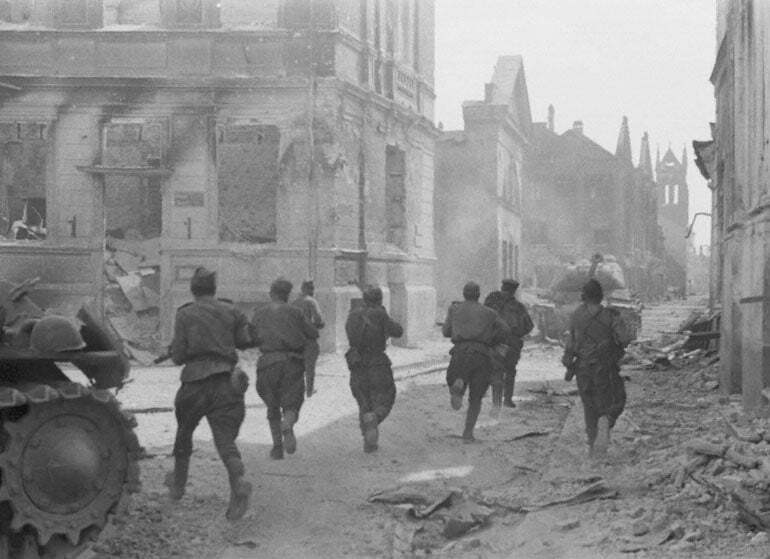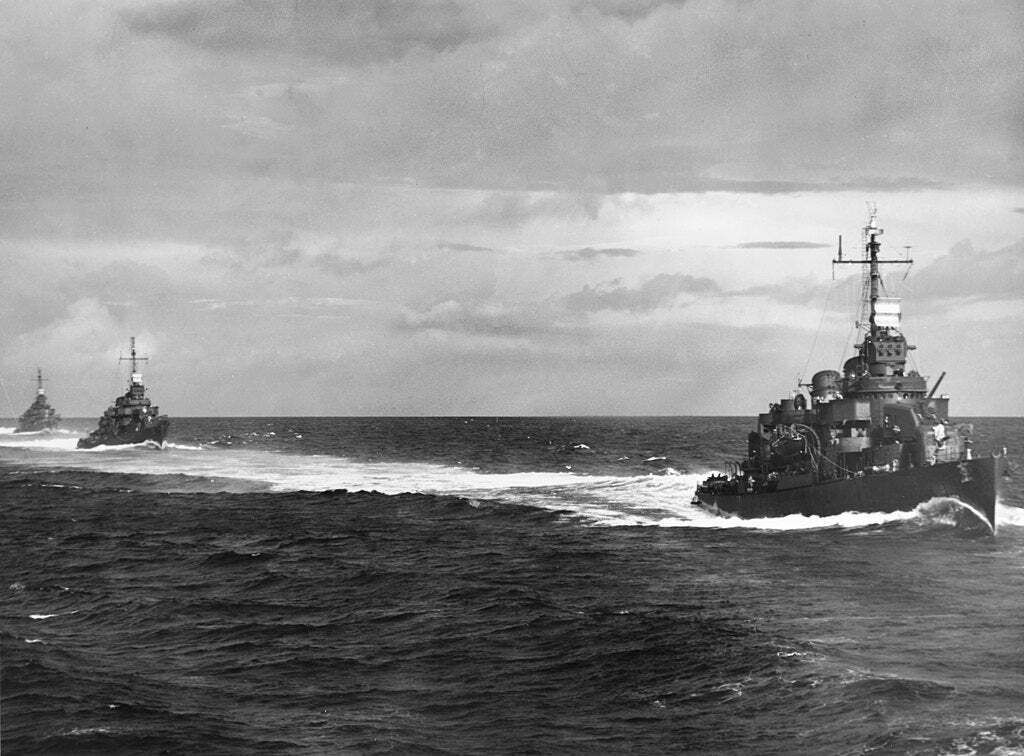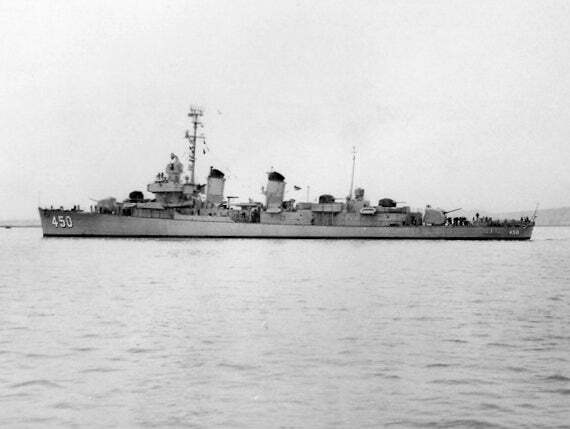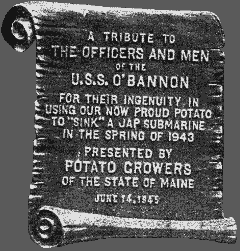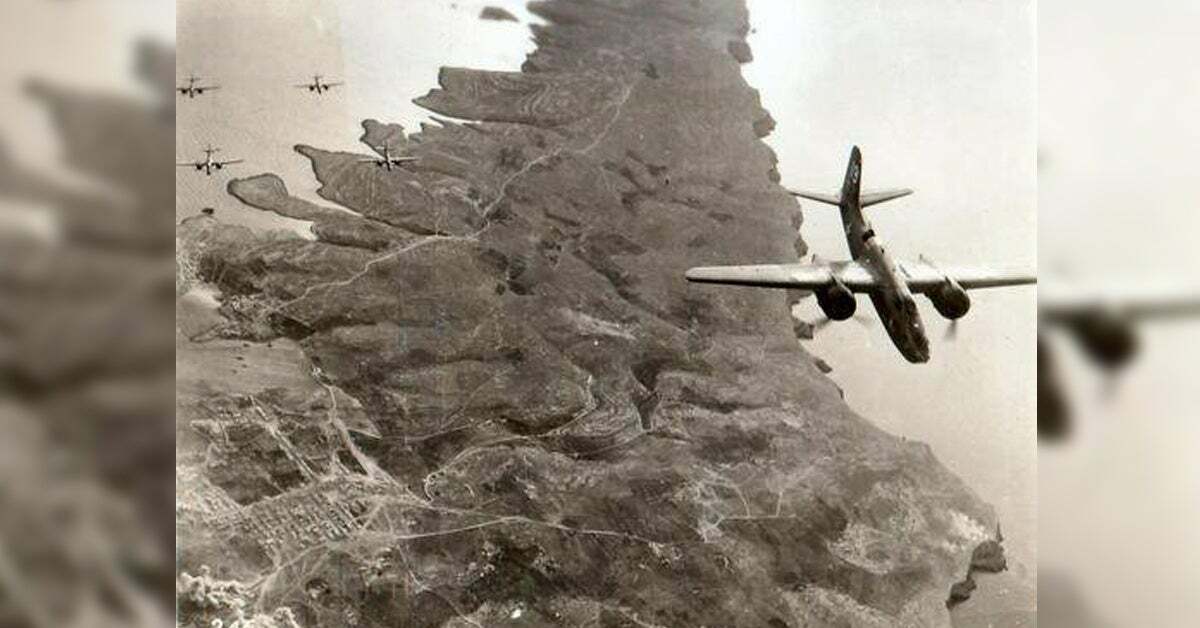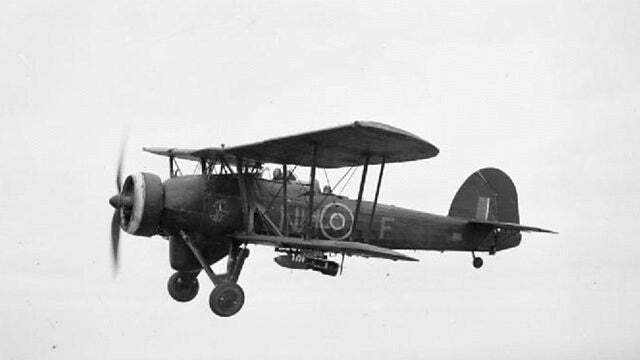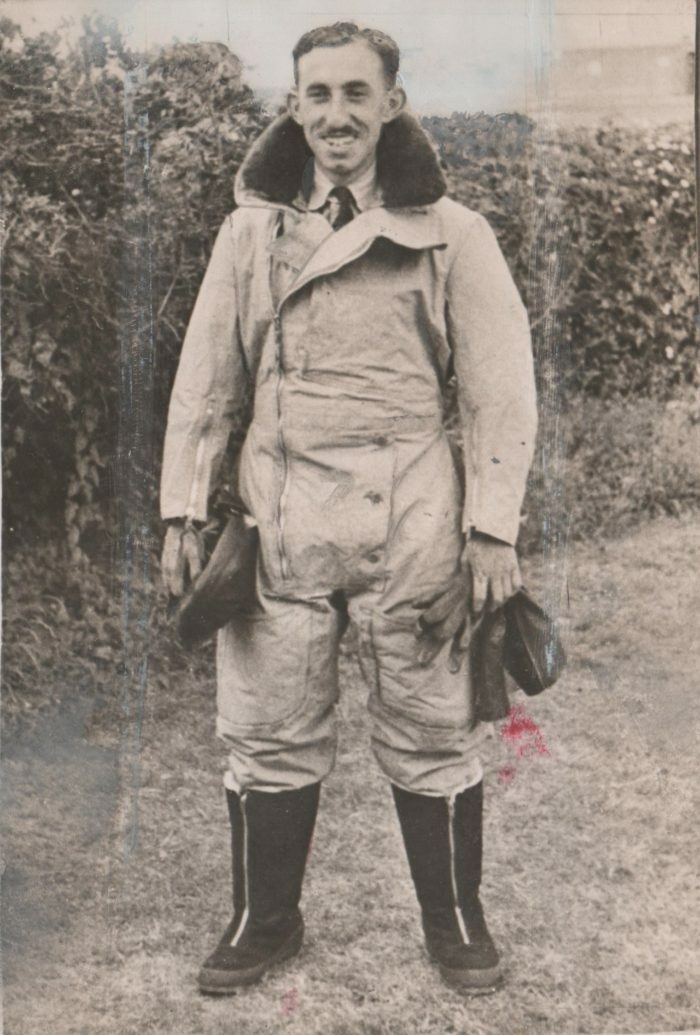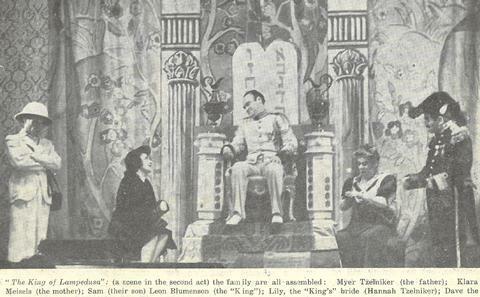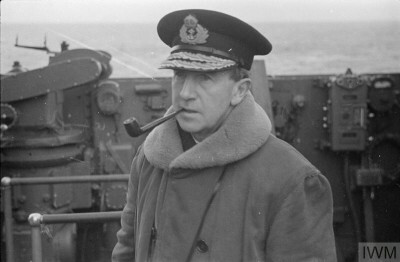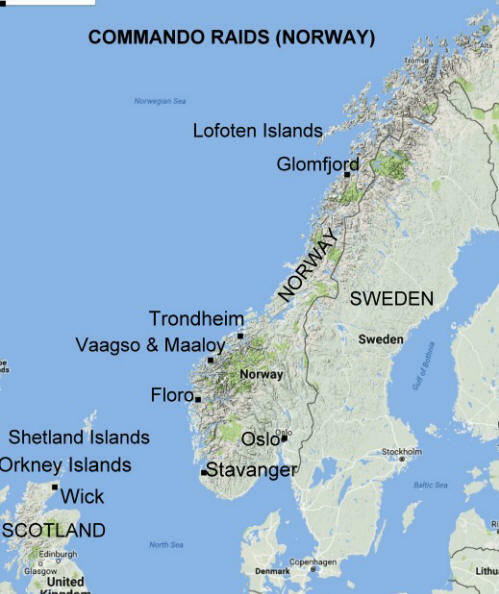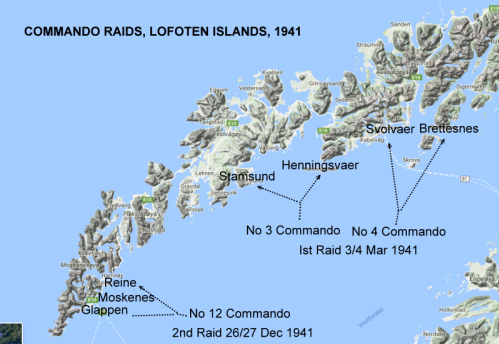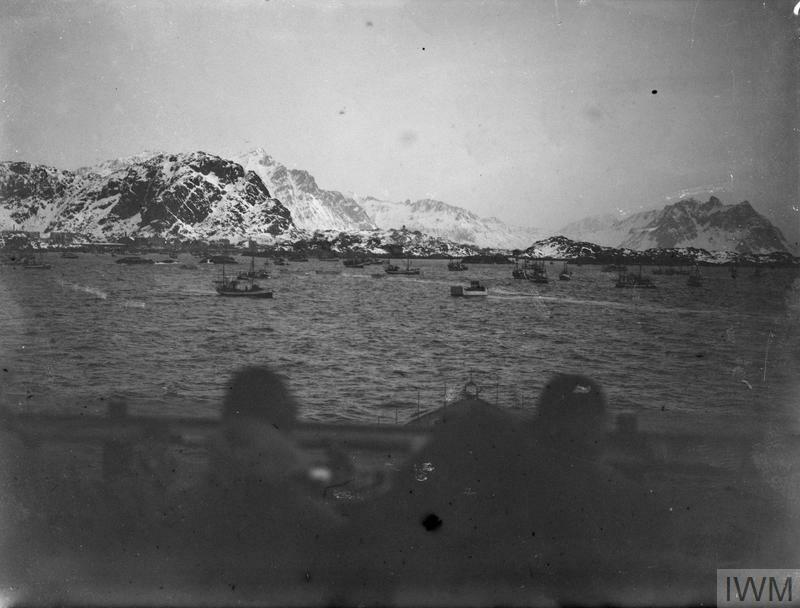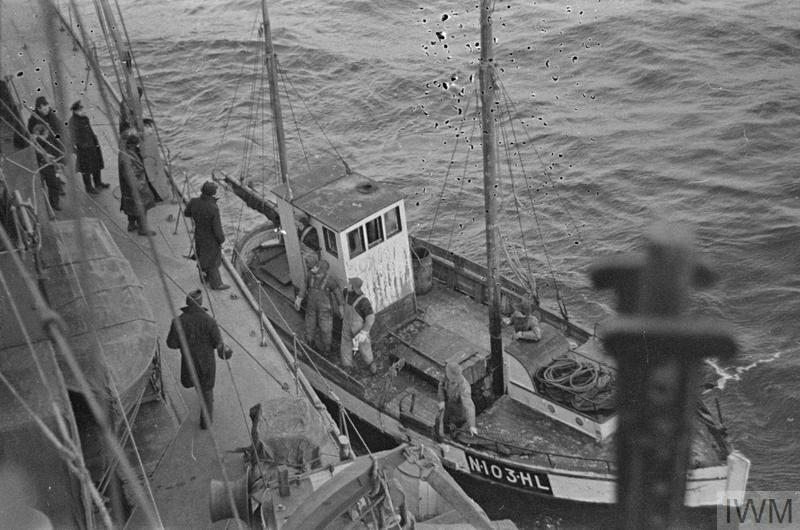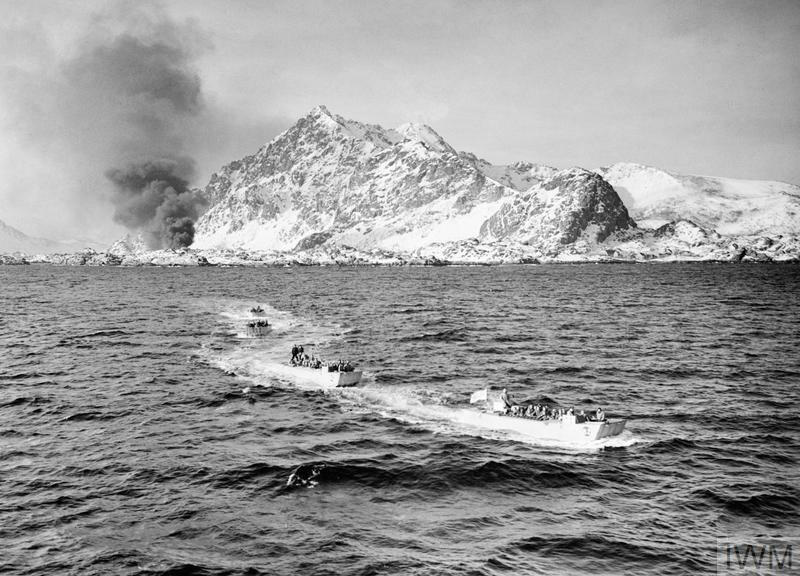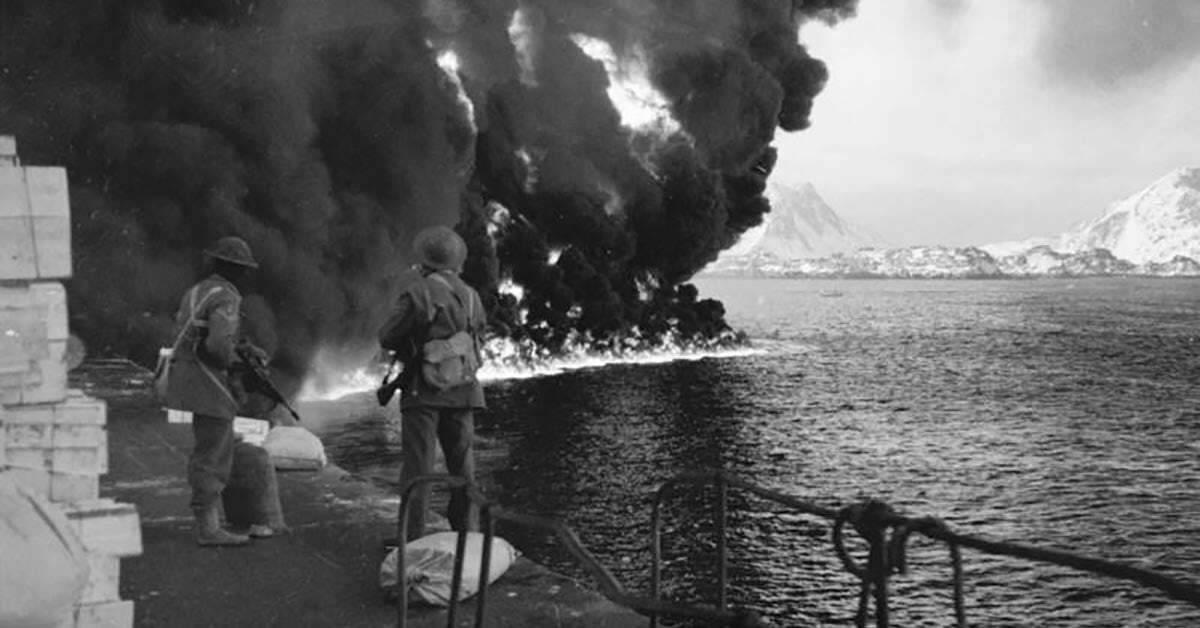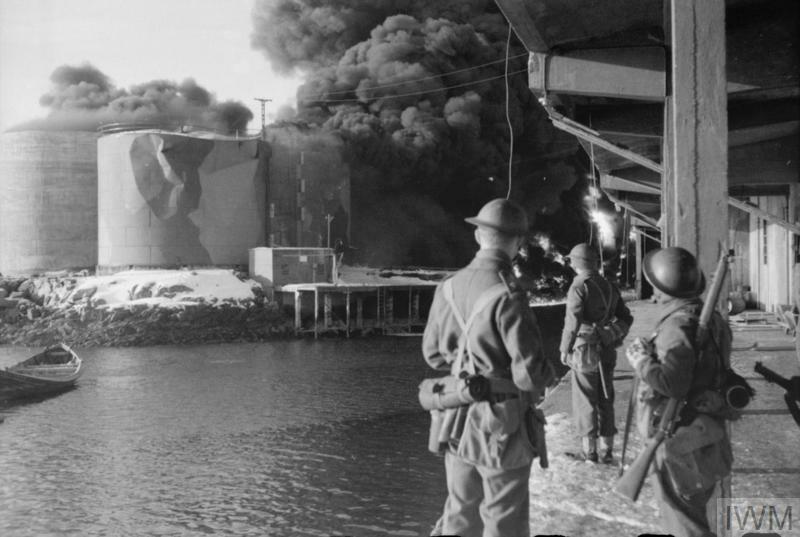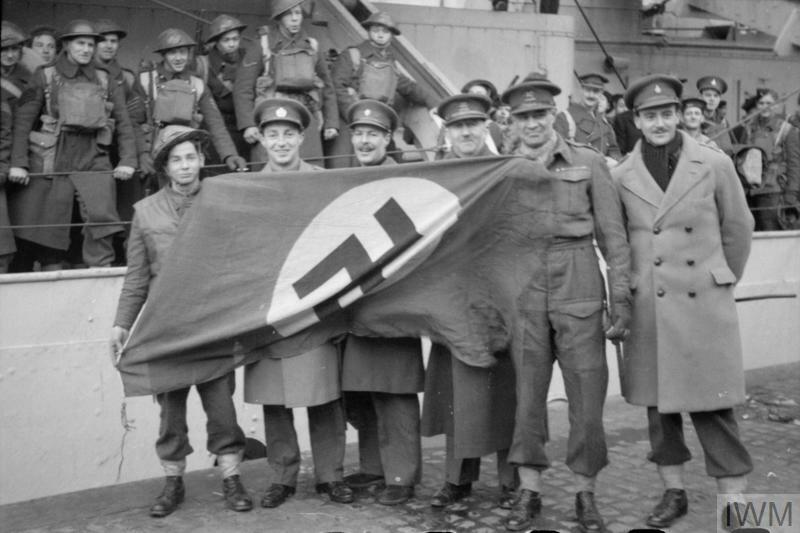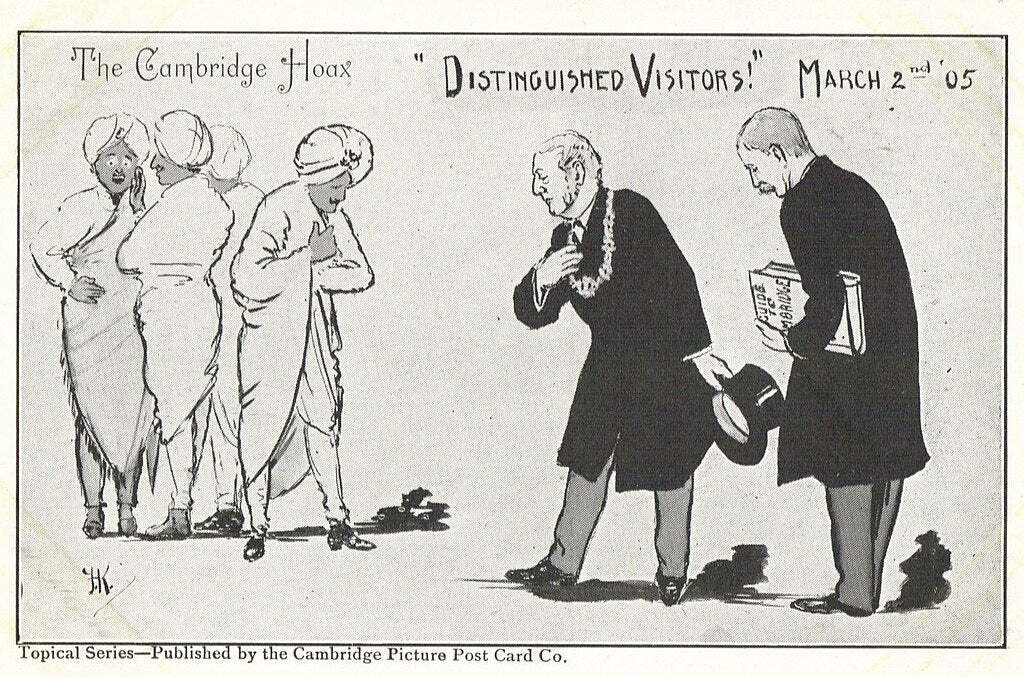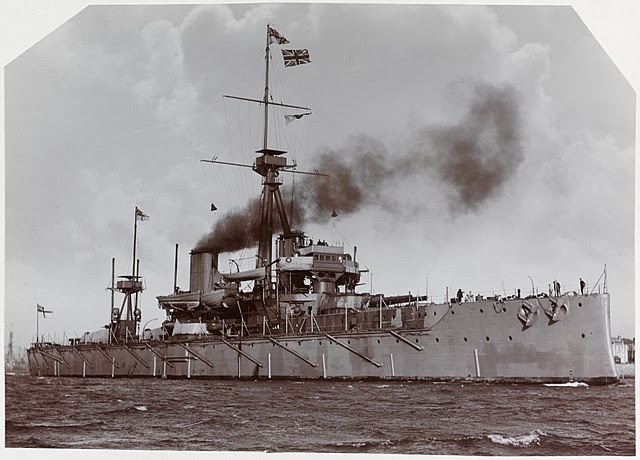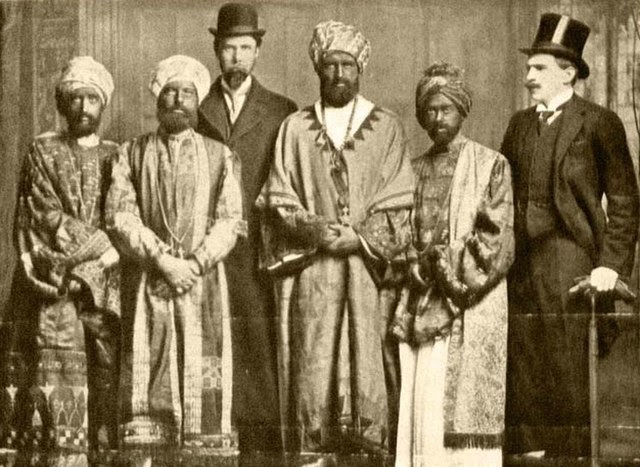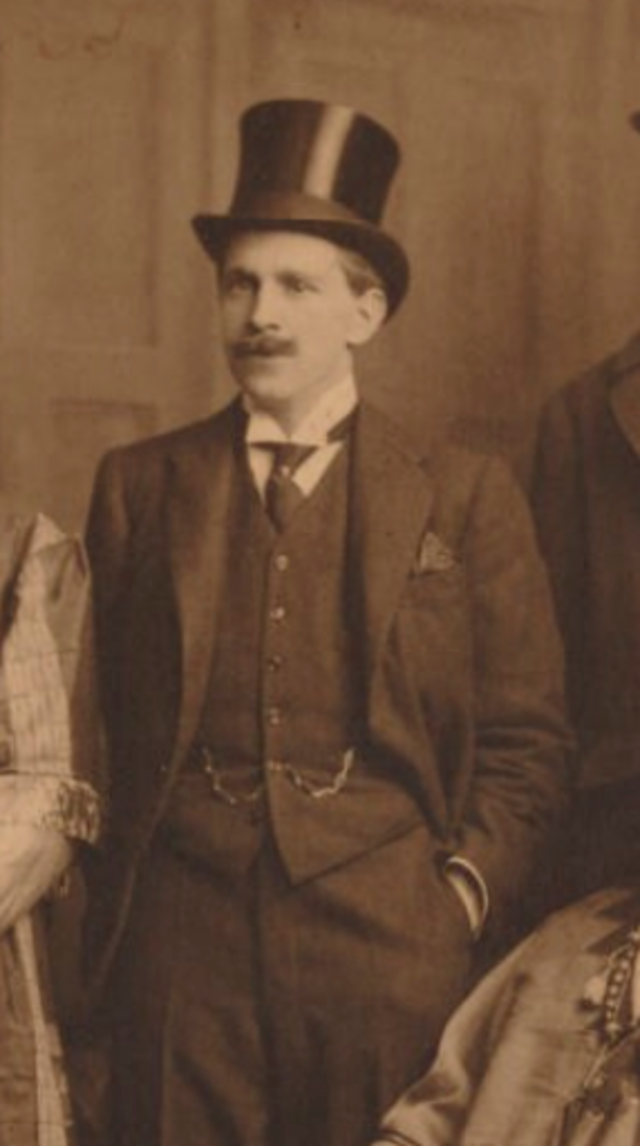- Posts: 1270
- Thank you received: 1797
Little stories
- Maki
-

- Offline
Less
More
4 years 2 months ago #73
by Maki
Replied by Maki on topic Little stories
Why Brazil’s World War II force had the best unit patch
Brazilian soldiers celebrate Brazilian Independence Day in Italy during World War II, September 1944.
Brazil’s contribution to the Allied war effort is extraordinary but often forgotten. Though Brazil originally tried to remain neutral in the conflict, the United States eventually encouraged the country to break off relations with the Axis powers. As a result, German u-boats began to sink Brazilian shipping and kill Brazilian citizens.As a result, Brazil entered the war on the Allied side in August 1942, ready to punish the Axis for killing Brazilians.The Brazilian Expeditionary Force numbered some 25,000 men, the only ally from South America to contribute troops to the war effort. Brazil’s fighting force would play a crucial role in some of the critical European battles to come, in a way no one thought possible. Literally.Some commenters said the world would more likely see snakes smoking than see Brazilian troops on a World War II battlefield. So when the BEF showed up to deploy with the U.S. Fifth Army, they looked a lot like the Americans in their fatigues, save for one important detail: a shoulder patch, featuring a snake smoking a pipe.
“Smoking Cobras” unit patch.
Now proudly calling themselves the “Smoking Cobras,” the Brazilian forces were ready to fight the Italians and Germans anywhere they were needed. Meanwhile, the Brazilian Navy and Air Force were getting their revenge on the Axis Navy and Air Forces that had so damaged Brazilian shipping. After losing 36 or more ships before entering the war, they lost only three ships afterward. And despite Brazil’s Air Force only flying five percent of the war’s air sorties, they managed to destroy 85 percent of Axis ammo dumps, 36 percent of Axis fuel depots, and 28 percent of Axis transportation infrastructure.Back on the ground, the “Smoking Cobras” of the Brazilian Expeditionary Force were fighting the Italians and Germans in the Italian Campaign in 1943 and making short work of their enemy while providing much-needed rest for units that had been fighting for months.
A Brazilian mortar crew fires their 81mm mortar in support of infantry in the Sassomolare area of the Fifth Army front north of Florence, April 1945.
The three regimental combat teams that comprised the BEF took on the German 148th Division, soundly defeating them at the Battle of Collecchio. Other victories came in succession: Camaiore, Monte Prano, Serchio Valley. The Brazilians also took down the Italian Monte Rosa, San Marco, and Italia divisions. In all, they captured more than 15,000 prisoners and took a further 500 out of action in later campaigns.They retreated only when they ran out of ammunition, and their losses in Italy numbered just north of 450 killed in action.
Brazilian soldiers celebrate Brazilian Independence Day in Italy during World War II, September 1944.
Brazil’s contribution to the Allied war effort is extraordinary but often forgotten. Though Brazil originally tried to remain neutral in the conflict, the United States eventually encouraged the country to break off relations with the Axis powers. As a result, German u-boats began to sink Brazilian shipping and kill Brazilian citizens.As a result, Brazil entered the war on the Allied side in August 1942, ready to punish the Axis for killing Brazilians.The Brazilian Expeditionary Force numbered some 25,000 men, the only ally from South America to contribute troops to the war effort. Brazil’s fighting force would play a crucial role in some of the critical European battles to come, in a way no one thought possible. Literally.Some commenters said the world would more likely see snakes smoking than see Brazilian troops on a World War II battlefield. So when the BEF showed up to deploy with the U.S. Fifth Army, they looked a lot like the Americans in their fatigues, save for one important detail: a shoulder patch, featuring a snake smoking a pipe.
“Smoking Cobras” unit patch.
Now proudly calling themselves the “Smoking Cobras,” the Brazilian forces were ready to fight the Italians and Germans anywhere they were needed. Meanwhile, the Brazilian Navy and Air Force were getting their revenge on the Axis Navy and Air Forces that had so damaged Brazilian shipping. After losing 36 or more ships before entering the war, they lost only three ships afterward. And despite Brazil’s Air Force only flying five percent of the war’s air sorties, they managed to destroy 85 percent of Axis ammo dumps, 36 percent of Axis fuel depots, and 28 percent of Axis transportation infrastructure.Back on the ground, the “Smoking Cobras” of the Brazilian Expeditionary Force were fighting the Italians and Germans in the Italian Campaign in 1943 and making short work of their enemy while providing much-needed rest for units that had been fighting for months.
A Brazilian mortar crew fires their 81mm mortar in support of infantry in the Sassomolare area of the Fifth Army front north of Florence, April 1945.
The three regimental combat teams that comprised the BEF took on the German 148th Division, soundly defeating them at the Battle of Collecchio. Other victories came in succession: Camaiore, Monte Prano, Serchio Valley. The Brazilians also took down the Italian Monte Rosa, San Marco, and Italia divisions. In all, they captured more than 15,000 prisoners and took a further 500 out of action in later campaigns.They retreated only when they ran out of ammunition, and their losses in Italy numbered just north of 450 killed in action.
The following user(s) said Thank You: snowman, Juanma66
Please Log in or Create an account to join the conversation.
- Maki
-

- Offline
Less
More
- Posts: 1270
- Thank you received: 1797
4 years 2 months ago #74
by Maki
Replied by Maki on topic Little stories
A Soviet soldier took on 50 Germans with grenades and an ax
Iconic photo of a Soviet officer leading his soldiers into battle against the invading German army, 12 July 1942, in Soviet Ukraine.
Everyone knows the fighting on World War II’s eastern front was bitter and brutal but just how bitter and brutal can really only be seen in individual interactions between the sides. Of course, there are hundreds of stories about the fighting in Stalingrad and the crimes committed against Soviet citizens by the German Army and SS.Maybe the best example is the incident that happened between a German Army patrol and one Red Army soldier, Dmitry Ovcharenko. Anyone who survived this incident was unlikely to forget it – if there were any survivors at all.
Dmitry Ovcharenko
Ovcharenko was a peasant soldier, recruited from Lugansk, Russia. He grew up without much of an education, but joined the Soviet Army long before World War II came to the USSR. When it did and Germany began its invasion of his homeland, Ovcharenko put on the uniform once more and set out to repel the invaders.
Soviet soldiers at Stalingrad during a short rest after fighting.
His time in combat wouldn’t last for very long. He was wounded at the very beginning of Operation Barbarossa in 1941, but he wasn’t removed from the front lines. He was known for his strength and could still walk, so he was tasked with moving food and ammunition from Soviet supplies to the front and distributing them.On July 13, 1941 Ovcharenko was at work doing that job when he was stopped by a German squad of 50 men. They stripped him of his weapons and his deliveries and sat him near his carriage to interrogate him. As he sat in the hay on his carriage, he remembered that an ax and a box of grenades was within reach, a dangerous weapon for any soldier, but devastating in the hands of a seasoned veteran like Ovcharenko. As he sat for his interrogation by a German officer, in one fell swoop, he grabbed the ax and swung it around to cut at the officer’s neck. It lopped the German’s head clean off of his body. The German troops stared blankly at what had just occurred, covered in blood and literally stunned beyond belief.
Soviet soldiers of the 1st Baltic Front during an attack in the Latvian city of Jelgava, 16 August 1944.
Ovcharenko wasn’t stunned, however. He had been fighting Germans for a long time, in all kinds of conditions, and being covered in the blood of his enemies didn’t faze him one bit. He grabbed the nearby box of grenades and threw them at his captors as he ran for the nearest treeline. The box exploded and killed almost half of the enemy soldiers instantly. By then the German squad was in full retreat mode. When Ovcharenko realized he was winning the engagement, he decided to press his advantage. He came out of the treeline with the ax in his hand and began to run down the enemy as they ran away. He caught up to one slow-moving officer and lopped his head off too. With an angry Russian soldier covered in blood and wielding an equally bloody ax running at them, the German booked it out of there as fast as humanly possible, anxious not to be another victim of the ax-murdering Russian who was both stronger and faster than he looked. What should have been the quick interrogation and execution of a Soviet supply sergeant turned into a grisly scene out of a horror movie that had yet to be made. Ovcharenko was awarded Hero of the Soviet Union and sent back to fight in a machine gun squad. He didn’t survive the war, however. He was killed in Hungary in 1945.
Iconic photo of a Soviet officer leading his soldiers into battle against the invading German army, 12 July 1942, in Soviet Ukraine.
Everyone knows the fighting on World War II’s eastern front was bitter and brutal but just how bitter and brutal can really only be seen in individual interactions between the sides. Of course, there are hundreds of stories about the fighting in Stalingrad and the crimes committed against Soviet citizens by the German Army and SS.Maybe the best example is the incident that happened between a German Army patrol and one Red Army soldier, Dmitry Ovcharenko. Anyone who survived this incident was unlikely to forget it – if there were any survivors at all.
Dmitry Ovcharenko
Ovcharenko was a peasant soldier, recruited from Lugansk, Russia. He grew up without much of an education, but joined the Soviet Army long before World War II came to the USSR. When it did and Germany began its invasion of his homeland, Ovcharenko put on the uniform once more and set out to repel the invaders.
Soviet soldiers at Stalingrad during a short rest after fighting.
His time in combat wouldn’t last for very long. He was wounded at the very beginning of Operation Barbarossa in 1941, but he wasn’t removed from the front lines. He was known for his strength and could still walk, so he was tasked with moving food and ammunition from Soviet supplies to the front and distributing them.On July 13, 1941 Ovcharenko was at work doing that job when he was stopped by a German squad of 50 men. They stripped him of his weapons and his deliveries and sat him near his carriage to interrogate him. As he sat in the hay on his carriage, he remembered that an ax and a box of grenades was within reach, a dangerous weapon for any soldier, but devastating in the hands of a seasoned veteran like Ovcharenko. As he sat for his interrogation by a German officer, in one fell swoop, he grabbed the ax and swung it around to cut at the officer’s neck. It lopped the German’s head clean off of his body. The German troops stared blankly at what had just occurred, covered in blood and literally stunned beyond belief.
Soviet soldiers of the 1st Baltic Front during an attack in the Latvian city of Jelgava, 16 August 1944.
Ovcharenko wasn’t stunned, however. He had been fighting Germans for a long time, in all kinds of conditions, and being covered in the blood of his enemies didn’t faze him one bit. He grabbed the nearby box of grenades and threw them at his captors as he ran for the nearest treeline. The box exploded and killed almost half of the enemy soldiers instantly. By then the German squad was in full retreat mode. When Ovcharenko realized he was winning the engagement, he decided to press his advantage. He came out of the treeline with the ax in his hand and began to run down the enemy as they ran away. He caught up to one slow-moving officer and lopped his head off too. With an angry Russian soldier covered in blood and wielding an equally bloody ax running at them, the German booked it out of there as fast as humanly possible, anxious not to be another victim of the ax-murdering Russian who was both stronger and faster than he looked. What should have been the quick interrogation and execution of a Soviet supply sergeant turned into a grisly scene out of a horror movie that had yet to be made. Ovcharenko was awarded Hero of the Soviet Union and sent back to fight in a machine gun squad. He didn’t survive the war, however. He was killed in Hungary in 1945.
The following user(s) said Thank You: snowman, Juanma66
Please Log in or Create an account to join the conversation.
- Maki
-

- Offline
Less
More
- Posts: 1270
- Thank you received: 1797
4 years 1 month ago #75
by Maki
Replied by Maki on topic Little stories
A US Navy destroyer once won a surface engagement with potatoes
Three of the U.S. Navy Destroyer Squadron 21's ships underway steaming in column, while en route to Guadalcanal and Tulagi on 15 August 1943, following the Vella Lavella landings. The ships are (from front to rear): USS O'Bannon (DD-450), USS Chevalier (DD-451) and USS Taylor (DD-468). Photographed from USS Nicholas (DD-449). (U.S. Navy photo).
In 1943, the USS O’Bannon was on patrol near the Solomon Islands when it came in contact with a Japanese submarine. This encounter would end with one of the greatest sea stories in U.S. naval history, but like all sea stories, no one knows how true it actually is. The O’Bannon was a legendary destroyer, the only ship to escape the naval battle off of Guadalcanal unharmed while still sinking a Japanese battleship. In April 1943, still high off the victory in the Guadalcanal campaign, the destroyer was a lone ship off the Solomons. Upon encountering the enemy submarine, the Americans opened fire immediately, destroying the boat’s conning tower and preventing it from escaping beneath the waves of the Pacific Ocean. The submarine’s skipper wouldn’t be cowed into attempting to flee the area, however. The sub pulled up right alongside O’Bannon and began firing with small arms and trying to bring its deck gun to bear.
The U.S. Navy destroyer USS O’Bannon (DDE-450) off the Mare Island Naval Shipyard, California (USA), on 1 March 1951. She was in overhaul at the shipyard from 19 February to 24 March 1951. (U.S. Navy photo)
Up close was initially where the O’Bannon’s own captain wanted to be. At first he ordered the crew to ram the submarine and send it to the bottom, but realizing the sub might be a minelayer, he changed his mind and the two ships continued the fight side by side. With the enemy vessel so close, the O’Bannon was unable to fire on the boat using its own guns. The crew of the destroyer decided to throw everything they could at the enemy – literally. This meant going below into the holds and bringing up potatoes from a storage locker and chucking them at the Japanese. They didn’t know how effective the effort actually was. The Japanese were said to have panicked and thrown their guns overboard. What actually happened aboard both ships is something up for debate, even to this day. Historians contend that it’s too weird a sea story to have just been made up, and the skipper of the O’Bannon also contends the story is true, but with some details missing. Commander Donald MacDonald (his real name) later said the submarine was so close, the ship’s cook bet another crew member that he could hit it with a potato, but maintains no potatoes were actually thrown at the enemy. Once the media got hold of the story, he contends, the story became a legend.
Plaque commemorating the Potato incident. (U.S. Navy photo)
Another account of the interaction between the two ships says that the potatoes were thrown by the crew of the O’Bannon, and that the Japanese crewmembers thought the potatoes were hand grenades and that’s why they retreated back to the sub to escape. Once below, the boat submerged and, without a conning tower, quickly filled with water and sank. One more account says the Japanese retreated into their boat for the same reason, but that the submarine didn’t try to submerge or escape, the potatoes just bought the crew of the O’Bannon time to ready depth charges for the appropriate depth and position, and the crew sank the enemy using the weapons designed to do just that. Some also say the Americans simply threw the potatoes because the enemy was there, the potatoes were there, and there was nothing else to do but get out some aggression toward the people trying to kill them. No matter what the real truth of the story may be, it was immortalized forever on a plaque housed at the Maine Maritime Museum until 1970, when another ship designated O’Bannon was to be launched and it would be housed aboard that ship until the time came to move it. But when the new O’Bannon was launched, the plaque was nowhere to be found.For the fun French potato thrower
Three of the U.S. Navy Destroyer Squadron 21's ships underway steaming in column, while en route to Guadalcanal and Tulagi on 15 August 1943, following the Vella Lavella landings. The ships are (from front to rear): USS O'Bannon (DD-450), USS Chevalier (DD-451) and USS Taylor (DD-468). Photographed from USS Nicholas (DD-449). (U.S. Navy photo).
In 1943, the USS O’Bannon was on patrol near the Solomon Islands when it came in contact with a Japanese submarine. This encounter would end with one of the greatest sea stories in U.S. naval history, but like all sea stories, no one knows how true it actually is. The O’Bannon was a legendary destroyer, the only ship to escape the naval battle off of Guadalcanal unharmed while still sinking a Japanese battleship. In April 1943, still high off the victory in the Guadalcanal campaign, the destroyer was a lone ship off the Solomons. Upon encountering the enemy submarine, the Americans opened fire immediately, destroying the boat’s conning tower and preventing it from escaping beneath the waves of the Pacific Ocean. The submarine’s skipper wouldn’t be cowed into attempting to flee the area, however. The sub pulled up right alongside O’Bannon and began firing with small arms and trying to bring its deck gun to bear.
The U.S. Navy destroyer USS O’Bannon (DDE-450) off the Mare Island Naval Shipyard, California (USA), on 1 March 1951. She was in overhaul at the shipyard from 19 February to 24 March 1951. (U.S. Navy photo)
Up close was initially where the O’Bannon’s own captain wanted to be. At first he ordered the crew to ram the submarine and send it to the bottom, but realizing the sub might be a minelayer, he changed his mind and the two ships continued the fight side by side. With the enemy vessel so close, the O’Bannon was unable to fire on the boat using its own guns. The crew of the destroyer decided to throw everything they could at the enemy – literally. This meant going below into the holds and bringing up potatoes from a storage locker and chucking them at the Japanese. They didn’t know how effective the effort actually was. The Japanese were said to have panicked and thrown their guns overboard. What actually happened aboard both ships is something up for debate, even to this day. Historians contend that it’s too weird a sea story to have just been made up, and the skipper of the O’Bannon also contends the story is true, but with some details missing. Commander Donald MacDonald (his real name) later said the submarine was so close, the ship’s cook bet another crew member that he could hit it with a potato, but maintains no potatoes were actually thrown at the enemy. Once the media got hold of the story, he contends, the story became a legend.
Plaque commemorating the Potato incident. (U.S. Navy photo)
Another account of the interaction between the two ships says that the potatoes were thrown by the crew of the O’Bannon, and that the Japanese crewmembers thought the potatoes were hand grenades and that’s why they retreated back to the sub to escape. Once below, the boat submerged and, without a conning tower, quickly filled with water and sank. One more account says the Japanese retreated into their boat for the same reason, but that the submarine didn’t try to submerge or escape, the potatoes just bought the crew of the O’Bannon time to ready depth charges for the appropriate depth and position, and the crew sank the enemy using the weapons designed to do just that. Some also say the Americans simply threw the potatoes because the enemy was there, the potatoes were there, and there was nothing else to do but get out some aggression toward the people trying to kill them. No matter what the real truth of the story may be, it was immortalized forever on a plaque housed at the Maine Maritime Museum until 1970, when another ship designated O’Bannon was to be launched and it would be housed aboard that ship until the time came to move it. But when the new O’Bannon was launched, the plaque was nowhere to be found.For the fun French potato thrower
The following user(s) said Thank You: snowman, Juanma66
Please Log in or Create an account to join the conversation.
- Maki
-

- Offline
Less
More
- Posts: 1270
- Thank you received: 1797
4 years 1 month ago #76
by Maki
Replied by Maki on topic Little stories
That time an entire Italian regiment surrendered to one pilot
When Royal Air Force pilot Sydney Cohen crash landed on the Italian-controlled island of Lampedusa in 1943, he thought he would be in for the fight of his life. Lampedusa was the home of more than 4,000 Italian troops in garrison, and all Cohen had was his service weapon to fight them.Instead, he was in for the surprise of his life, and was crowned King of Lampedusa shortly after.
A biplane similar to the one flown by Syd Cohen.
Cohen was supposed to be headed back to his home base on Malta in a Swordfish biplane but never quite made it. The pilot was flying with his two-man crew, Sgt. Peter Tait, the navigator, and Sgt. Les Wright, the wireless operator and gunner, on a search and rescue mission over the Mediterranean Sea. Their instruments failed mid-flight and they got turned around, only to run out of fuel before realizing the island below was not Malta.The plane had a “fit of gremlins,” as Cohen later described it. The only place he could land was on the Axis-held island of Lampedusa.Luckily for the RAF pilot, there were no Nazis on Lampedusa, only Italians. The island had a big runway and the crew saw no option but to go in and land on it, consequence be damned. They could never reach Malta in their condition and it was better than crashing into the ocean. They also didn’t know that the Allies ran heavy bombing missions on the island. So when he crash landed on the island, it made for incredible headlines back in London. Not because of a terrific battle – it was the mass surrender of 4,300 Italians.“As we came down on a ropey landing ground we saw a burnt hangar and burnt aircraft around us,” Cohen said. “A crowd of Italians came out to meet us and we put our hands up to surrender but then we saw they were all waving white sheets shouting, `No, no. We surrender.’ The whole island was surrendering to us.”
Sydney Cohen
Cohen got bold and asked to see the island’s commandant. As they moved toward the commandant’s villa, another Allied air raid began. The RAF pilot began to surmise the Italians were sick of getting bombed and really were ready to surrender.“They asked me to return to Malta and inform the authorities of their offer to surrender,” he said. “They gave me a scrap of paper with a signature on it.”So Cohen refueled and took off for the Allied base in Tunis to give the RAF the news. Upon hearing it, the RAF, the newspapers, London society, and even the British Jewish population raved about the new “King of Lampedusa.”
Cohen’s story was immediately picked up and turned into a play and a musical. Hollywood even wanted to make a movie of the event as soon as possible. News of the debacle even reached the ears of Nazi propagandists in Berlin, who threatened to give the Jews in London’s East End “a visit from the Luftwaffe.”The real life of Sydney Cohen doesn’t have a happy ending, no matter how the play, musical, and/or feature film turned out. Cohen disappeared while flying a mission near the Straits of Dover in August 1946. Neither his body nor the wreckage of his plane were ever located and no one knows exactly what happened to him.
When Royal Air Force pilot Sydney Cohen crash landed on the Italian-controlled island of Lampedusa in 1943, he thought he would be in for the fight of his life. Lampedusa was the home of more than 4,000 Italian troops in garrison, and all Cohen had was his service weapon to fight them.Instead, he was in for the surprise of his life, and was crowned King of Lampedusa shortly after.
A biplane similar to the one flown by Syd Cohen.
Cohen was supposed to be headed back to his home base on Malta in a Swordfish biplane but never quite made it. The pilot was flying with his two-man crew, Sgt. Peter Tait, the navigator, and Sgt. Les Wright, the wireless operator and gunner, on a search and rescue mission over the Mediterranean Sea. Their instruments failed mid-flight and they got turned around, only to run out of fuel before realizing the island below was not Malta.The plane had a “fit of gremlins,” as Cohen later described it. The only place he could land was on the Axis-held island of Lampedusa.Luckily for the RAF pilot, there were no Nazis on Lampedusa, only Italians. The island had a big runway and the crew saw no option but to go in and land on it, consequence be damned. They could never reach Malta in their condition and it was better than crashing into the ocean. They also didn’t know that the Allies ran heavy bombing missions on the island. So when he crash landed on the island, it made for incredible headlines back in London. Not because of a terrific battle – it was the mass surrender of 4,300 Italians.“As we came down on a ropey landing ground we saw a burnt hangar and burnt aircraft around us,” Cohen said. “A crowd of Italians came out to meet us and we put our hands up to surrender but then we saw they were all waving white sheets shouting, `No, no. We surrender.’ The whole island was surrendering to us.”
Sydney Cohen
Cohen got bold and asked to see the island’s commandant. As they moved toward the commandant’s villa, another Allied air raid began. The RAF pilot began to surmise the Italians were sick of getting bombed and really were ready to surrender.“They asked me to return to Malta and inform the authorities of their offer to surrender,” he said. “They gave me a scrap of paper with a signature on it.”So Cohen refueled and took off for the Allied base in Tunis to give the RAF the news. Upon hearing it, the RAF, the newspapers, London society, and even the British Jewish population raved about the new “King of Lampedusa.”
Cohen’s story was immediately picked up and turned into a play and a musical. Hollywood even wanted to make a movie of the event as soon as possible. News of the debacle even reached the ears of Nazi propagandists in Berlin, who threatened to give the Jews in London’s East End “a visit from the Luftwaffe.”The real life of Sydney Cohen doesn’t have a happy ending, no matter how the play, musical, and/or feature film turned out. Cohen disappeared while flying a mission near the Straits of Dover in August 1946. Neither his body nor the wreckage of his plane were ever located and no one knows exactly what happened to him.
The following user(s) said Thank You: snowman, Juanma66, Damni
Please Log in or Create an account to join the conversation.
- Maki
-

- Offline
Less
More
- Posts: 1270
- Thank you received: 1797
4 years 1 month ago #77
by Maki
Replied by Maki on topic Little stories
Operation Claymore - Lofoten Island 1st Raid
3/4 March 1941
Background Operation Claymore was the 1st Commando raid on the Lofoten Islands off the Norwegian coast, just north of the Arctic Circle. The Commandos destroyed German ships and factories producing fish oil and they gave free passage to the UK to over 300 Norwegian volunteers, a few Germans and quislings. It was, however, most notable for boosting flagging morale within the ranks of the Commandos and the country, as news of its success was made public.
Rear Admiral L H K Hamilton, DSO, who was in command of the naval operations.
The primary targets were Norwegian fish oil factories, whose product was used in the manufacture of Glycerine for the German munitions industry.
Plans & Preparations The Lofoten Islands lie off the Norwegian coast, about 100 miles north of the Arctic Circle. In appearance and size they resemble the rugged Scottish islands of the Outer Hebrides. They were targeted under Churchill's directive to harass German forces in coastal areas of friendly occupied countries.On 21 February, with land forces under the command of Brigadier J C Haydon, a flotilla comprising HMS Queen Emma, HMS Princess Beatrix and a naval escort of 5 destroyers, left Scapa Flow in the Orkney Islands for the Faroe Islands. There they completed final training.It was here that the No 3 and 4 Special Services Battalion Company designations reverted to No 4 and No 3 Commando respectively - the former under the command of Lt. Colonel Lister and the latter under Lt Colonel Durnford-Slater. This was part of a much wider re-organisation of Special Forces, which was completed by mid March 1941.On the 1st of March around 500 commandos, some sappers for demolition work and 50 Norwegian sailors, departed for the Norwegian coast.
Action The weather was foul on the three-day voyage and the cramped living conditions were made all the worse by seasickness. With 24 hours to go before their arrival, a German aircraft spotted them and reported to German Air force HQ. There was, fortunately, no visible response from German forces.
The flotilla arrived off the Lofoten Islands in the early hours of 4 March. As they boarded the landing craft for four separate destinations, lights were twinkling in the distance, a good indication that the possibility of a raid was not on the minds of the German command. The intense cold and sea spray caused ice to form on the Commandos' protective clothing and the landings were more abrupt than usual, as the craft lowered their ramps onto solid ice.The surprise was complete. Even some locals going to work assumed that the activity was a German training exercise! German soldiers, officials and collaborators were rounded up and before long fish oil factories, buildings used for military purposes and ships in the harbour, were systematically blown up. The Norwegians provided hot ersatz coffee for the Commandos.
Lieutenant R L Wills sent a telegram to one, A Hitler of Berlin, from the telegraph office at Stamsund. "You said in your last speech, German troops would meet the British wherever they landed. Where are your troops?" Equally cheeky was a bus ride taken by Lord Lovat and some of his men to a nearby seaplane base. The commander of the base later complained about the "unwarlike" behaviour of the Commandos and undertook to report accordingly to the Fuhrer!
Outcome By midday, the demolition work was complete and re-embarkation commenced. There had been no significant resistance which, for some Commandos, was frustrating, considering the special training effort undertaken for the raid. They also had hoped to contribute to the wider objective of denuding German forces.
However, it was not a wasted trip by any means. They had destroyed 11 factories, 800,000 gallons of oil and five ships. They also gave free passage to 314 volunteers (including 8 women) for the Norwegian forces and took into custody 60 quislings and 225 German prisoners. The English manager of Messrs Allen & Hanbury, chemists, who had been caught there when the Germans occupied the country, was liberated. The cost to the Allies was an accidental self-inflicted wound to an officer's thigh!Not reported at the time, was the recovery from the trawler Krebs of a set of spare rotors for a German Enigma coding machine. They were dispatched to Bletchley Park, the top secret code breaking establishment near MIlton Keynes in southern England, where they were examined in the hope of gaining some advantage in the battle to intercept German military communications.The months prior to this raid had been a frustrating time for the Commandos/Special Services. They had been encouraged to volunteer for hazardous duties by the military authorities, but were left with little to do. There was even disagreement about how these forces should be organised and deployed. Morale was understandably at a low ebb and, although this raid was virtually unopposed, it demonstrated what could be achieved by a relatively small, well trained unit with the element of surprise. The success of the raid was a fillip to morale but some Commandos were disappointed that the hazardous duties they had volunteered and trained for, had not been utilised on this operation.
3/4 March 1941
Background Operation Claymore was the 1st Commando raid on the Lofoten Islands off the Norwegian coast, just north of the Arctic Circle. The Commandos destroyed German ships and factories producing fish oil and they gave free passage to the UK to over 300 Norwegian volunteers, a few Germans and quislings. It was, however, most notable for boosting flagging morale within the ranks of the Commandos and the country, as news of its success was made public.
Rear Admiral L H K Hamilton, DSO, who was in command of the naval operations.
The primary targets were Norwegian fish oil factories, whose product was used in the manufacture of Glycerine for the German munitions industry.
Plans & Preparations The Lofoten Islands lie off the Norwegian coast, about 100 miles north of the Arctic Circle. In appearance and size they resemble the rugged Scottish islands of the Outer Hebrides. They were targeted under Churchill's directive to harass German forces in coastal areas of friendly occupied countries.On 21 February, with land forces under the command of Brigadier J C Haydon, a flotilla comprising HMS Queen Emma, HMS Princess Beatrix and a naval escort of 5 destroyers, left Scapa Flow in the Orkney Islands for the Faroe Islands. There they completed final training.It was here that the No 3 and 4 Special Services Battalion Company designations reverted to No 4 and No 3 Commando respectively - the former under the command of Lt. Colonel Lister and the latter under Lt Colonel Durnford-Slater. This was part of a much wider re-organisation of Special Forces, which was completed by mid March 1941.On the 1st of March around 500 commandos, some sappers for demolition work and 50 Norwegian sailors, departed for the Norwegian coast.
Action The weather was foul on the three-day voyage and the cramped living conditions were made all the worse by seasickness. With 24 hours to go before their arrival, a German aircraft spotted them and reported to German Air force HQ. There was, fortunately, no visible response from German forces.
The flotilla arrived off the Lofoten Islands in the early hours of 4 March. As they boarded the landing craft for four separate destinations, lights were twinkling in the distance, a good indication that the possibility of a raid was not on the minds of the German command. The intense cold and sea spray caused ice to form on the Commandos' protective clothing and the landings were more abrupt than usual, as the craft lowered their ramps onto solid ice.The surprise was complete. Even some locals going to work assumed that the activity was a German training exercise! German soldiers, officials and collaborators were rounded up and before long fish oil factories, buildings used for military purposes and ships in the harbour, were systematically blown up. The Norwegians provided hot ersatz coffee for the Commandos.
Lieutenant R L Wills sent a telegram to one, A Hitler of Berlin, from the telegraph office at Stamsund. "You said in your last speech, German troops would meet the British wherever they landed. Where are your troops?" Equally cheeky was a bus ride taken by Lord Lovat and some of his men to a nearby seaplane base. The commander of the base later complained about the "unwarlike" behaviour of the Commandos and undertook to report accordingly to the Fuhrer!
Outcome By midday, the demolition work was complete and re-embarkation commenced. There had been no significant resistance which, for some Commandos, was frustrating, considering the special training effort undertaken for the raid. They also had hoped to contribute to the wider objective of denuding German forces.
However, it was not a wasted trip by any means. They had destroyed 11 factories, 800,000 gallons of oil and five ships. They also gave free passage to 314 volunteers (including 8 women) for the Norwegian forces and took into custody 60 quislings and 225 German prisoners. The English manager of Messrs Allen & Hanbury, chemists, who had been caught there when the Germans occupied the country, was liberated. The cost to the Allies was an accidental self-inflicted wound to an officer's thigh!Not reported at the time, was the recovery from the trawler Krebs of a set of spare rotors for a German Enigma coding machine. They were dispatched to Bletchley Park, the top secret code breaking establishment near MIlton Keynes in southern England, where they were examined in the hope of gaining some advantage in the battle to intercept German military communications.The months prior to this raid had been a frustrating time for the Commandos/Special Services. They had been encouraged to volunteer for hazardous duties by the military authorities, but were left with little to do. There was even disagreement about how these forces should be organised and deployed. Morale was understandably at a low ebb and, although this raid was virtually unopposed, it demonstrated what could be achieved by a relatively small, well trained unit with the element of surprise. The success of the raid was a fillip to morale but some Commandos were disappointed that the hazardous duties they had volunteered and trained for, had not been utilised on this operation.
The following user(s) said Thank You: snowman
Please Log in or Create an account to join the conversation.
- Maki
-

- Offline
Less
More
- Posts: 1270
- Thank you received: 1797
4 years 5 days ago #78
by Maki
Replied by Maki on topic Little stories
How Virginia Woolfe helped play a prank on the British Navy
In 1910, one of the most elaborate pranks to date was played, successfully, against the British Navy. Irishman and professional prankster, William Horace de Vere Cole, devised a plan where he and others pretended to be Abyssinian (or Ethiopian) royalty, to obtain a tour of the Royal Navy Ship, the HMS Dreadnought.
For the prank, Cole himself dressed as the prince, with others acting as his entourage. Many of the attendees painted their faces to appear as they were native Ethiopians. With them, Virginia Woolfe — yes that Virginia Woolfe — was in attendance and dressed as a man.
An image of the HMS Dreadnought from 1906.
The event is today known as the Dreadnought hoax and is Cole’s most successful prank to date. In later years, he took on pranks to discredit or embarrass political leaders, or just to have fun. For instance, on his honeymoon, he’s said to have dropped horse manure in a town that could only be reached by boat.
The team of pranksters in costume; Virginia Woolfe is on the far left.
It’s also worth noting that Cole earned little, if any, money from his pranks. Coming from a well-to-do family, he focused on his love of practical jokes rather than obtaining work or finishing his studies. He did serve in the Yorkshire Hussars, an auxiliary of the British Army during the Second Boer War. However, he was shot and removed from the army due to his injury. Cole also donated his earnings to widows of the war. The Dreadnought Hoax
Cole invited five friends to play a part in the prank. Adrian Stephen and his sister Virginia Stephen (later Virginia Woolfe), Guy Ridley, Anthony Buxton and Duncan Grant. Professional theater costumier and makeup artist, Willy Clarkson, was asked to help prepare them for the big event.
Cole in a portrait from the early 1900s.
The group wore heavy and elaborate dress robes and covered their faces in dark makeup to look authentically Ethiopian. It’s mentioned that the group avoided any drinks or food, lest they mess up their makeup. The Dreadnought was chosen as it was commanded by the Stephens’ cousin. Ultimately, he did not recognize either of them. A telegram was sent to the Dreadnaught after Cole found a Post Office with all female employees. He thought they could more easily pass, with fewer questions asked of them. The message stated, “Prince Makalen of Abbysinia /i]sic[i and suite arrive 4.20 today Weymouth. He wishes to see Dreadnought. Kindly arrange meet them on arrival.” And thus, the plan went into action.The group arrived at Dreadnaught and received an intricate tour. The Royal Navy attempted to fly an Ethiopian flag but did not have one on hand. Instead, they flew a Zanzibar flag and played their national anthem. Throughout the prank, Cole et all went to ridiculous lengths, such as requesting prayer mats, speaking in made-up words, and presenting false military honors. We can only assume that the Royal Navy was either deeply naive or being extremely polite.In any case, word of the prank spread as Cole himself contacted the media and sent their picture to the Daily Mirror. The Royal Navy was heavily mocked for falling for the prank. Newspapers wrote articles about their ignorance, cartoons poked fun of the event, and more. Others even sent mocking telegrams directly to the ship. Further reports showed how unsafe the event was, with potential enemies being able to obtain passage aboard the ship and learn its capabilities.The Navy demanded arrests to be made, but ultimately no crimes were found to have been committed. Decades later, Virginia Woolfe talked about the event, confirming many details of the hoax.
In 1910, one of the most elaborate pranks to date was played, successfully, against the British Navy. Irishman and professional prankster, William Horace de Vere Cole, devised a plan where he and others pretended to be Abyssinian (or Ethiopian) royalty, to obtain a tour of the Royal Navy Ship, the HMS Dreadnought.
For the prank, Cole himself dressed as the prince, with others acting as his entourage. Many of the attendees painted their faces to appear as they were native Ethiopians. With them, Virginia Woolfe — yes that Virginia Woolfe — was in attendance and dressed as a man.
An image of the HMS Dreadnought from 1906.
The event is today known as the Dreadnought hoax and is Cole’s most successful prank to date. In later years, he took on pranks to discredit or embarrass political leaders, or just to have fun. For instance, on his honeymoon, he’s said to have dropped horse manure in a town that could only be reached by boat.
The team of pranksters in costume; Virginia Woolfe is on the far left.
It’s also worth noting that Cole earned little, if any, money from his pranks. Coming from a well-to-do family, he focused on his love of practical jokes rather than obtaining work or finishing his studies. He did serve in the Yorkshire Hussars, an auxiliary of the British Army during the Second Boer War. However, he was shot and removed from the army due to his injury. Cole also donated his earnings to widows of the war. The Dreadnought Hoax
Cole invited five friends to play a part in the prank. Adrian Stephen and his sister Virginia Stephen (later Virginia Woolfe), Guy Ridley, Anthony Buxton and Duncan Grant. Professional theater costumier and makeup artist, Willy Clarkson, was asked to help prepare them for the big event.
Cole in a portrait from the early 1900s.
The group wore heavy and elaborate dress robes and covered their faces in dark makeup to look authentically Ethiopian. It’s mentioned that the group avoided any drinks or food, lest they mess up their makeup. The Dreadnought was chosen as it was commanded by the Stephens’ cousin. Ultimately, he did not recognize either of them. A telegram was sent to the Dreadnaught after Cole found a Post Office with all female employees. He thought they could more easily pass, with fewer questions asked of them. The message stated, “Prince Makalen of Abbysinia /i]sic[i and suite arrive 4.20 today Weymouth. He wishes to see Dreadnought. Kindly arrange meet them on arrival.” And thus, the plan went into action.The group arrived at Dreadnaught and received an intricate tour. The Royal Navy attempted to fly an Ethiopian flag but did not have one on hand. Instead, they flew a Zanzibar flag and played their national anthem. Throughout the prank, Cole et all went to ridiculous lengths, such as requesting prayer mats, speaking in made-up words, and presenting false military honors. We can only assume that the Royal Navy was either deeply naive or being extremely polite.In any case, word of the prank spread as Cole himself contacted the media and sent their picture to the Daily Mirror. The Royal Navy was heavily mocked for falling for the prank. Newspapers wrote articles about their ignorance, cartoons poked fun of the event, and more. Others even sent mocking telegrams directly to the ship. Further reports showed how unsafe the event was, with potential enemies being able to obtain passage aboard the ship and learn its capabilities.The Navy demanded arrests to be made, but ultimately no crimes were found to have been committed. Decades later, Virginia Woolfe talked about the event, confirming many details of the hoax.
The following user(s) said Thank You: snowman
Please Log in or Create an account to join the conversation.
Birthdays
- Tecnom in 1 day
- Hellcat in 4 days
- Winters in 5 days
- Alexliberty in 6 days
- Mizha in 10 days


